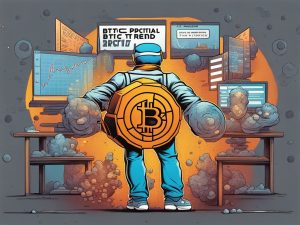The Unique Approach of Blast in Decentralized Finance
In this article, we explore the concept behind Blast, a project that aims to foster financial inclusion through a community-driven platform. We will delve into how Blast works and examine the associated risks.
What is Blast?
Blast positions itself as an L2 blockchain that focuses on expanding the on-chain economy while achieving the best yield. It is currently in the early access phase of its airdrop, which requires an invite code to enter.
The project is backed by Paradigm and Standard Crypto and offers native yield for ETH and stablecoins. Users have the opportunity to receive the Blast Airdrop.
How Blast Works
Blast consists of three main components:
- Auto Rebasing: Basta is compatible with ERC-20 tokens, allowing for easy transfer.
- Staking: Blast utilizes Ethereum’s Shanghai update for staking. ETH-assets are rebased on its chain, enabling users to automatically receive ETH yield from L1 staking.
- T-Bill Yield: Blast’s auto-rebasing stablecoin, USDB, rewards users who bridge stablecoins. The on-chain T-Bill protocol of MakerDAO provides the yield for USDB.
Blast also promises a 5% yield by staking USDB, surpassing Ethereum’s 4% dividend with its latest upgrade.
Risks Associated with Blast
- Lack of Docs: The project lacks a whitepaper and only provides general information about its concept.
- No Ecosystem: Blast lacks an explorer, compatible wallets, bridges, and oracles, limiting user interaction with the platform.
- Unclear Airdrop Roadmap: The airdrop phase does not have specific dates for reward distribution, causing uncertainty for participants.
- An unreliable pyramid scheme: Blast’s incentivization model heavily relies on inviting others to use the platform, which raises concerns about its sustainability.
Conclusion
Blast’s lack of credibility and questionable business model raise doubts about its long-term viability. The number of users who have already deposited their ETH is concerning, highlighting the need for thorough research in the industry. While we hope Blast meets its projections, it appears unlikely.
Hot Take: Blast’s Risky Proposition
Blast’s approach to decentralized finance raises red flags due to its unreliable pyramid scheme structure and lack of transparency. Users should exercise caution and thoroughly evaluate the project before investing their assets. As the industry continues to evolve, it is crucial to prioritize credibility and sustainability in the pursuit of financial inclusion.





 By
By
 By
By
 By
By
 By
By
 By
By